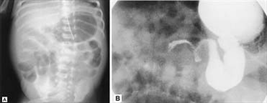Usmle
{"name":"Usmle", "url":"https://www.quiz-maker.com/QPREVIEW","txt":"4) A 1-day-old infant who received silver nitrate eye drops in the delivery room is suffering from bilateral purulent conjunctival discharge. Which of the following is the most likely cause of this child’s condition?, 5) A 1-day-old infant who was born by a difficult forceps delivery is alert and active. She does not move her left arm spontaneously or during a Moro reflex. Rather, she prefers to maintain it internally rotated by her side with the forearm extended and pronated. The rest of her physical examination is normal. This clinical scenario most likely indicates which of the following?","img":"https://www.quiz-maker.com/3012/images/ogquiz.png"}
More Quizzes
Do You Know Yadira?
14711
Counter for Small Animals (dogs, cats, frogs, fishes etc.)
11620
Emotions
630
ATP trivia quiz
5225
Can You Name All These Famous French Movie Actors?
201040211
Which Network Scenario Requires a WAN? CCNA
201024655
Global Human Rights
15826766
What Type of Life Coach Should I Be? Take the Free Now
201055947
Are You a Grammar Expert? Take Our Advanced English!
201044824
What Guitar Should I Buy? Find Your Perfect Match
201024869
What Are the Odds Questions? Test Your Probability!
201036556
Discover Your Ideal Air Force Career with Our Free
201024655

